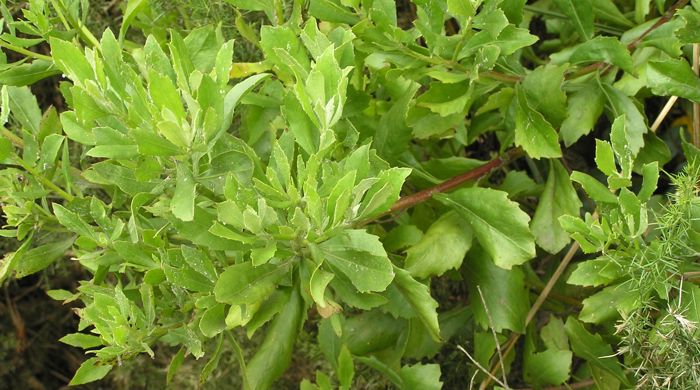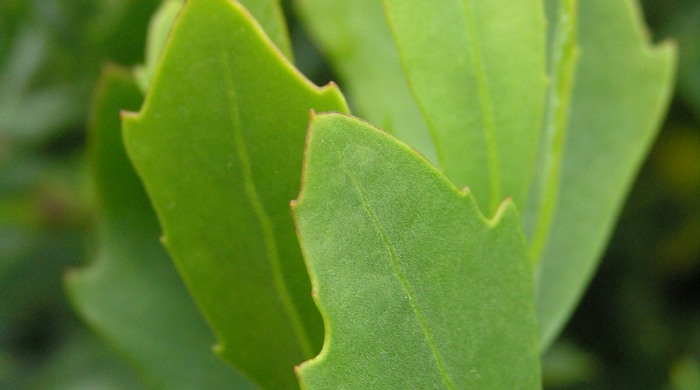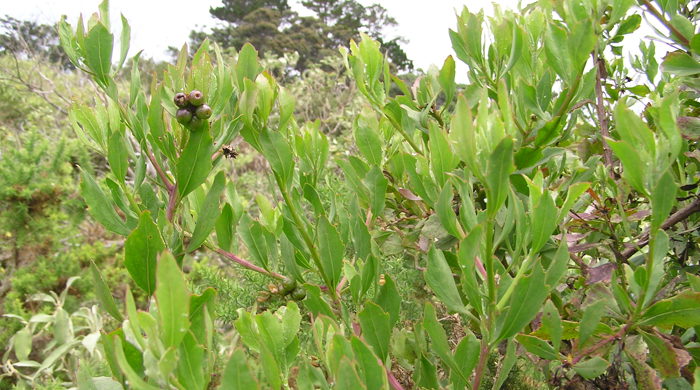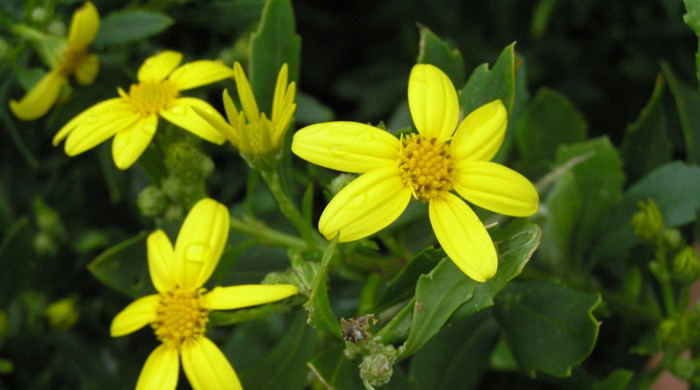Chrysanthemoides monilifera
Boneseed
Family: Asteraceae
Origin: South Africa
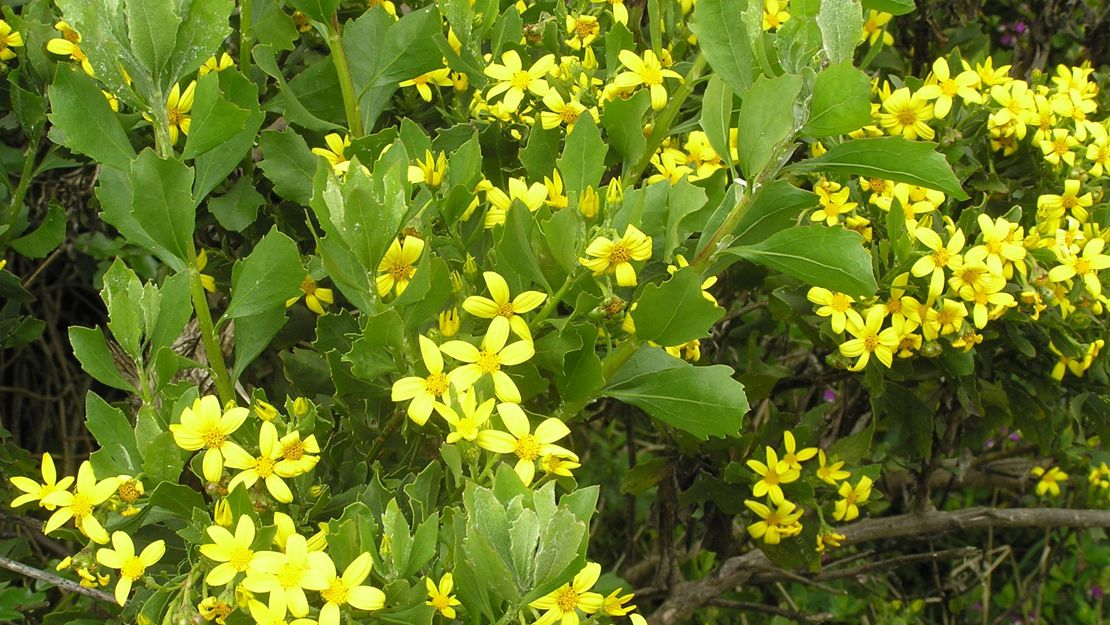
Regional Pest Management Plan (RPMP) status
- Aotea — Eradication
- Whole region — Sustained control
- Parkland with Significant Ecological Areas — Site-led (on-park only)
- National Pest Plant Accord Species
- Waitākere Ranges Heritage Area priority status
General description
Evergreen, sclerophyllous, < 3 m tall shrub to small tree. Stems are woolly and ribbed when young, become smooth with age. Leaves are smooth, leathery, bright green, irregularly serrated and alternate. Flowers are bright yellow and are produced September – February. Fruit is hard, oval and green ripening to black.
What you need to know
To help protect our environment:
- You must not breed, distribute, release or sell boneseed. As boneseed is a National Pest Plant Accord species, these restrictions apply within the Auckland region and across the whole of New Zealand.
- You must not plant boneseed within the Auckland region, unless you are transferring an existing plant on your land to another location within the boundaries of the same property.
- You must destroy any boneseed on land that you occupy if it has been planted in breach of the above rules and you are directed to do so by an authorised person.
Auckland Council will control boneseed at all sites within the Aotea/Great Barrier Island group where it is known to occur.
If you see boneseed anywhere on Aotea/Great Barrier Island group, please report it to Auckland Council at pestfree@aucklandcouncil.govt.nz.
Habitats
Disturbed sites, coastal fringes.
Dispersal
Seeds dispersed by birds and possums.
Impact on environment
Outcompetes native plants in open habitats. Can alter plant community composition through allelopathy and competition, change patterns of nutrient cycling, and promote weeds. Increases fire risk.
Control
Site management
Follow up treated areas 3 times per year. Encourage natural regeneration of native plants or replant treated areas where possible after 2-3 treatments to establish dense ground cover and minimise reinvasion.
Recommended approaches
Physical control
Method: Dig out.
Plant parts requiring disposal: Seeds.
Disposal options: Remove to greenwaste or landfill if practical.
Biocontrol
Check for the presence of biocontrol agents.
Boneseed leafroller (Tortrix s.l. sp. chrysanthemoides).
For more information about how biocontrol works, see What is biocontrol?
Community agrichemical control recommendations
No qualifications: Cut stump and paste freshly cut base of stems with glyphosate gel. Cut stump and spray freshly cut base with 100ml glyphosate green per 1L of water.
Certified Handler/Experienced agrichemical user: Foliar spray with 100ml glyphosate green per 10L of water and 20ml penetrant.
Caution: When using any herbicide or pesticide please read the label thoroughly to ensure that all instructions and safety requirements are followed.
